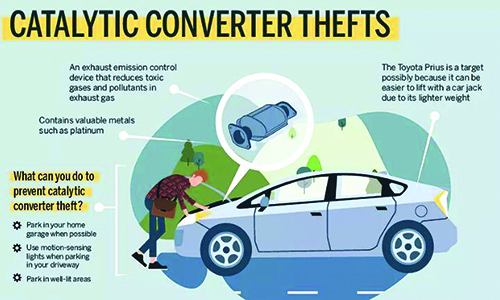
by Regan Bervar | Mar 19, 2021 | General Featured
“The number one rule of thieves is that nothing is too small to steal.” – Jimmy Breslin
 by Luke Schmaltz
by Luke Schmaltz
A large number of Denver residents are sitting on top of a hidden treasure and they don’t even know it.
Below the interior cabs of all modern cars, along the vehicle’s undercarriage parallel to the driveshaft, sits the exhaust system in a series of pipes, gaskets and couplings. Within this assembly, for all cars made after 1975, is a catalytic converter — a filter which transforms harmful exhaust compounds (hydrocarbons, nitrogen oxide and carbon monoxide) into inert gases.
This piece of automotive technology contains semi-precious metals which are crucial to the catalyzing process. These include palladium, rhodium and platinum — rare metals that are sought after and valued on par with gold. It is no secret to enterprising thieves that these components can fetch between $150 and $300 per unit from scrap yards and chop shops — and sometimes even more.
Amid the economic hardship of the past year, the risk-to-reward ratio of catalytic converter theft is attractive enough for someone with a few tools and nothing to lose to take action. Anyone with enough nerve and a bit of know-how can simply crawl beneath a car in the middle of the night and start hacking away. Vulnerable cars are everywhere — parked

Theft On The Rise: Catalytic converter theft is up 1600% in the Denver area from 2019.
on the street, in parking garages, strip malls and driveways. As jobs disappear, pandemic relief runs out, and perhaps a bad case of cabin-fever boredom takes hold — car part pirates set out to find their livelihood amid a vast urban landscape abundant with low-hanging fruit.
The number of thefts across Denver is on the rise like the temperature gauge on an overheating vehicle. In 2019, a total of just 15 were reported, while in 2020, the cases jumped up to a staggering 257. Meanwhile, 2021 is on par to leave that number in the dust, as 108 cases of stolen catalytic converters were reported by the end of January.
The Winners
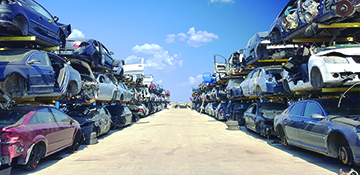
Junkyard: Catalytic converters make a quick stop at a place like this so the precious metals therein can be removed.v
Experienced thieves who know where to slither and hack can get away with half a dozen or more converters per night. Doorbell cameras have captured these heists taking place with alarming speed — some in under two minutes. Once these are sold to a scrap yard or fenced to a black-market processing facility, the thief makes a few bucks and the next guy (the fence) digs into the devices, harvests the precious metals therein and sells them to a dealer. While laws are in place that supposedly forbid scrap metal dealers and junkyards from accepting stolen goods, there is by no means a task force monitoring these markets. If thieves are bold enough to break the law in plain sight, what’s to stop them from continuing to do so until the valued goods find their way back into the supply chain?
Next in the catalytic converter economic stimulus line are the auto repair shops. As this is becoming a routine procedure, the parts can be replaced with a fair degree of quickness and ease. Yet, parts and labor cost money and even if the mechanic is an honest one, they’ll be billing each client anywhere from $1,000 to $3,000 per job.
The Losers
The victim’s experience is invariably the same. A vehicle owner gets in their car, turns the ignition key to start the engine and is jolted upwards by a roaring blast of exhaust from beneath. In previous years, the individual may have thought it was just a temperamental automotive glitch that would work itself out. More recently, however, a person in this scenario quickly comes to the harrowing realization that part of their car has been stolen right out from underneath them.
After a sputtering, cantankerous trip to the mechanic, they are hit with a repair bill that most likely places yet another degree of economic strain on an already dire situation. While folks with comprehensive insurance coverage can send the bill to their carrier, a great many drivers out there do not have such coverage because they are trying to save money, and when they bought their insurance, rampant car part theft was probably not yet on their radar.
The Also-rans
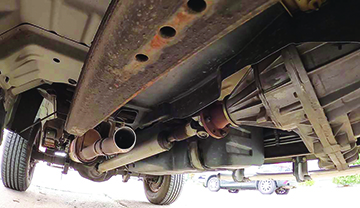
Catalytic Converter: If you want to keep your catalytic converter, knowing how to weld is a valuable skill.
The associated fallout of these thefts is the additional burden that is placed on the Denver Police Department. While there is little or nothing that responding officers can do to recover the stolen part, there is considerable strain in terms of the man hours it takes to follow up on every case, to fill out paperwork and to listen to the victims tell their stories.
Enough Is Enough
Across the Mile High City, people are becoming increasingly aware that they could very well be the next victim in line to have their catalytic converters stolen. The obvious solution is to park your car in a garage, lock it up for the night and the problem is solved. The problem with that, is that the vast majority of car owners, especially in neighborhoods near the city center, do not enjoy such luxuries.
High profile vehicles like SUVs, Hummers and 4×4 trucks are the easiest targets, as they do not need to be jacked up off the ground in order for the thieves to access the converter. A smart driver on a shoestring budget can opt to park their Prius between a Ford F-250 and a Land Rover and hope their neighbors bear the brunt of the thievery instead of them.
Proactive citizens can sit up all night and guard their cars with a flashlight and a baseball bat. Yet, most people enjoy their sleep and do not wish to confront criminals in the pale moonlight. Thankfully, this scourge of theft has necessitated a suite of new inventions designed to keep your catalytic converter attached to your car’s exhaust system and out of the hands of criminals. In yet another economically beneficial outcome of the rise in theft, these devices range anywhere from $125 to $700 or more apiece, plus installation if you’re not handy with tools. These products are carving out a market niche for themselves under names such as The Cat Clamp, Cat Security, Cat Strap and more.
- Cat Strap: This alarm-style device features contact and motion sensors. The strap is tethered along the length of the exhaust system (which includes the catalytic converter) by a series of metal clamps and rings. The sensor is then wired to the battery and the alarm receiver is mounted beneath the hood. Contact with the exhausts system or significant motion beneath the car in the vicinity of the catalytic converter will set it off. Thief activity beneath your car sets off the alarm, which then deters the perpetrator. Professional installation is recommended.
- Cat Security: This device is strictly hardware, and acts as a type of shield between your catalytic converter and the ground. The product is essentially sheet metal which is pre-fabricated to fit the undercarriage of specific models of cars. The shield is then bolted into place with a combination of security rivets, bolts and self-tapping screws. The protective barrier is immediately obvious to and should convince most thieves to think again. Professional installation is optional.
- Cat Clamp: Another hardware-based product, this invention uses braided, heavily-rated steel cables and heavy-duty steel clamps and adaptor plates which, once mounted and installed, surround your catalytic converter in a metal cage. The various product sizes can accommodate everything from regular sized cars to large, heavy duty diesel trucks. Hardware and cable run the length of the exhaust system and present an immediate visual deterrent to thieves — as it is obvious the catalytic converter is not coming off without a whole lot of effort and noise. Professional installation recommended.
Extreme Measures
A similar approach is to have the catalytic converter welded to your car’s frame, which would make it much harder and far more time consuming to steal. Another method is to have your car alarm system recalibrated to detect the subtle humming of a reciprocating saw or the light tog of a ratchet wrench. Other folks are engraving their car’s VIN number to the housing on the converter, which to an average thief might be a deterrent, but to an enterprising criminal — it might be an invitation to pursue identity theft.
The other options are to string barbed wire around your car every night and risk getting cited for littering or reckless endangerment. You could train rattlesnakes to coil up in the undercarriage at night and take a swipe at anything that crawls under the car. Or you could just sell the damn thing and get a bike — along with an arsenal of four or five heavy duty U-locks.
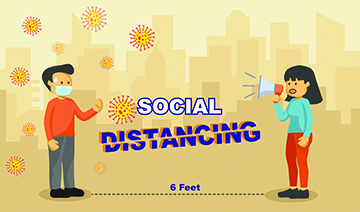
by Regan Bervar | Mar 19, 2021 | Glendale City News
“We cannot change anything until we accept it. Condemnation does not liberate, it oppresses.” – Carl Jung
 by Luke Schmaltz
by Luke Schmaltz
At the onset of 2020, most folks were not familiar with the term social distancing. For all the average citizen knew, it could have meant that your network of friends and associates was so big that it covered vast distances. But, as everyone knows all too well, that’s not what it meant. The result was a pandemic-distressed public that had to quickly train itself to curtail a deep-seated set of automatic social behaviors.

Social Distancing: A little over a year ago, few people knew what this meant. Now, it’s an all too familiar phrase.
Several hallmarks of normal social behavior were pinpointed as instances of human interaction that accelerated the spread of Covid-19. And so, in the spirit of self-preservation, an outgoing society deeply invested in handshakes, hugs and hellos became a sequestered, suspicious, lonely, paranoid populace — resentful of itself for being deprived of itself.
Social distancing restrictions are expected to lift in tandem with the vaccine rollout. There is a pervading hesitancy among many, however, to become relaxed too soon — floating the possibility that another surge in cases could take hold and then the whole mess starts over again. Yet, in the backs of the minds of many, are those blurry, joyous, pre-pandemic memories of exuberant greetings, boisterous gatherings and loving embraces. Lest they be lost to the righteousness of newly-converted germaphobia, a refresher course of America’s beloved social customs is in order.
Handshakes

Handshake: There is some speculation that the Coronavirus may spell the end of handshakes.
This universal gesture of goodwill has been in use for millennia and is evidenced in the archaeological record as far back as 500 BC. The handshake exists as a greeting, in one form or another in most cultures the world over and symbolizes alliance and trust between parties. Historians theorize that it was originally designed to show that neither person was carrying weapons in their right hand, with the shaking motion designed to dislodge any knives or other implements hidden up the sleeve. Today, elaborate variations on the palm-to-palm clasp have been invented as specialized greetings between members of an exclusive group or a codice of a secret affiliation. Regardless, this ice-breaker of a social mannerism is an essential conversation starter in the worlds of business and in leisure alike.
Pro tip: Do not deliberately crush the hand of the person you are greeting, as it eradicates the entire purpose of the gesture. Also, grabbing the offered hand and yanking the person toward you as a show of dominance can guarantee they will not be shaking your hand again anytime soon.
Fist Bumps And High Fives
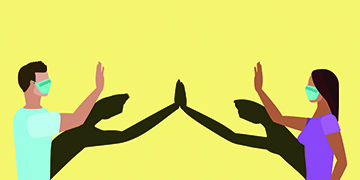
High Five: The high five is another greeting that may have contracted a permanent case of Coronavirus-itis.
While the former could be a toned-down version of the latter, both are internationally renowned gestures of affinity which originated in America. The fist bump first became popular in the 1970s and is thought to be dually appropriated from an incognito version of the Black Panther power symbol and the catalyzing magic ring touch of the Wonder Twins in the popular Super Friends cartoon. Also, the fist bump is the most benign of the hand-based greetings — used exclusively by the germ-conscious such as TV game show host Howie Mandell. Meanwhile, the high-five can be traced back to professional baseball players in the 1950s. As a celebration of success while the world was watching, it was a much-needed salute for triumph during intense moments when a handshake simply would not suffice.
Pro tip: First bumps are just that, a friendly tap so no matter how excited you are to see someone, do not punch their knuckles. To avoid embarrassing misses on high-five attempts, be sure to focus on your target — the center of your acquaintance’s palm. Otherwise, a spirited swat could turn into a flailing flap.
Hugs

Free Hugs: It is a proven scientific fact that hugs are good for you and free — most of the time.
Hugs in private between family members, especially mother and child, have been around since the dawn of mankind. Yet, the hug did not become a staple of Western public life until American celebrities and leaders co-opted it from their Latin and European counterparts in the mid-to-late 20th Century. The hug was popularized by entertainers like Sammy Davis Jr. and politicians like Jimmy Carter. Until recently, it was ubiquitous in relaxed, informal social situations and was an unspoken essential between family and friends. The expression, “You look like you could use a hug” is a result of this, because it has been found that the human embrace can provide comfort and reassurance in powerful ways where words and facial expressions fall short. In an article recently published by Time.com, researchers at Carnegie Mellon University’s Laboratory for the Study of Stress, Immunity and Disease reported, “ … [hugs] were associated with an uptick in positive mood markers and a reduction in negative ones; the opposite was true of relationship conflict. And on days when both occurred, people tended to report fewer negative feelings and more positive ones than on days when they experienced conflict but no hugs.”
Pro tip: Don’t be a long hugger unless the occasion is one of intense emotion. A momentary embrace will suffice. Also, the side hug where just one shoulder is offered rather than a full embrace is like shaking hands with just your thumb and forefinger. Go all in or don’t go at all.
Verbal Greetings
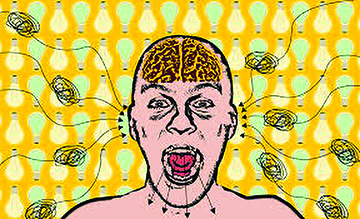
Screaming: Screaming at one another is a time-honored Western birthright.
Over the last year, folks going about their business in public have been trying to decipher mask-muffled language and the internal moods of their counterparts by just the emotions shown in the eyes. Yet, since talking and yelling (among other mouth-related functions) are the very mechanism through which the disease has been shown to spread, this behavior is under considerable scrutiny. In America, however, the freedoms of self-expression guaranteed by our first Amendment rights are practically ingrained in every citizen’s DNA. It’s only a matter of time before dudes are yelling across lanes of heavy traffic to get the attention of their buddy across the street and tipsy women are shrieking like banshees upon recognizing an old friend in a crowded bar. Spoken language is essential to the human condition and using it at high volumes is a distinct characteristic of Western culture.
Pro tip: For the last year, you’ve been observing the practice of not spitting into the face of the listener when you speak. Try to keep that.

by Regan Bervar | Mar 19, 2021 | Main Articles
“This is the power of gathering: it inspires us, delightfully, to be more hopeful, more joyful, more thoughtful … more alive.” – Alice Waters
 by Luke Schmaltz
by Luke Schmaltz
It is with hopeful trepidation that most Denverites look to the summer months. Yet, while the vaccine rollout is having a diminishing effect on the pandemic, it may still be too soon to dig the picnic basket out of the attic. Regardless, Denver offers a dizzying array of festivals, fairs and outdoor events every year. Sadly, as most residents know all too well, most of them had to be skipped in 2020. With any luck, circumstances just might improve to where the simple joy of gathering with friends to enjoy the warm weather, great food and diverse entertainment the Mile High City’s legendary events have to offer.
“Pandemic fatigue” is one of the softer terms folks are using to call what most honest people are describing with more vivid language such as extreme shut-in fever, Covid-19 craziness, or isolation delirium. While reaching herd immunity through vaccination is a process that disrupts nature in a good way, social distancing is fairly unnatural for most, and could be blamed for the all-too ubiquitous modality of depression and malaise among the populace.
Taste Of Colorado
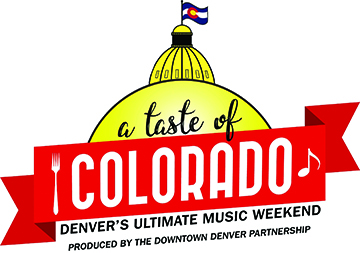
Taste: Taste of Colorado draws hordes of hungry visitors to downtown Denver every year.
Originally dubbed the Festival of Mountain and Plain, this gathering was established in 1895, and revived in 1983 by the Downtown Denver Partnership. Every year, restaurateurs, foodies, chefs, sauciers, pastry cooks and gustatory retail vendors of every stripe gather to market their businesses, showcase their talents and sell their treasures. The event happens every Labor Day weekend and is tentatively scheduled for September 4, 5 and 6, 2021. Britt Diehl, Senior Manager of Public Policy & Special Projects at DPP, explains, “… unfortunately we don’t have anything to report at this moment — we are looking at options based on public health guidelines/outlooks.”
CHUN People’s Fair
Every summer, the Capitol Hill United Neighborhoods Association (CHUN) throws a party in Denver’s Civic Center Park that offers something for anyone and everyone. This celebration of music, creativity and diversity welcomes artists, performers and spectators from every background imaginable in a two-day event that features music on over half a dozen stages. Typically held over the first weekend of June, the Fair was canceled in 2019 amid rumors of declining revenues and in 2020 for obvious reasons. Whether it is set for a resurgence in 2021 remains to be seen.
Cherry Creek Arts Festival

Arts Festival: The Cherry Creek Arts Festival hosts artists of every sort from around the world.
This event is perhaps the most approachable of all the offerings in an otherwise upscale, exclusive district. 2021 marks the 30th anniversary of this celebration of “Artivity” otherwise known as “Art for Everyone.” The event features “visual and performing arts and educational and immersive art experiences” and attracts upwards of 350,000 visitors along with 260 local and regional artists and hosts. The date for 2021 is yet to be set in stone, but if it takes place, it will most likely do so over the Fourth of July weekend — Friday, Saturday and Sunday, July 2, 3 and 4.
First Fridays
Denver art lovers have a total of six art walks to choose from on the first Friday of every month. These varied and diverse offerings take place across an array of vastly different districts and offer the city’s finest in galleries, museums and studios. These art walks take place in the River North Arts District, the Art District of Santa Fe, Golden Triangle Museum District, Tennyson Street Cultural District, South Pearl Street and 40 West Arts District and Block 7 Galleries. The latter is the most family-friendly of the lot, featuring a variety of dining options, a movie theater and a wintertime ice rink. Visitors to the previous five gatherings can expect to encounter a diverse offering of food trucks, restaurants, bars and breweries. Face masks are currently required by most establishments.
Cinco de Mayo
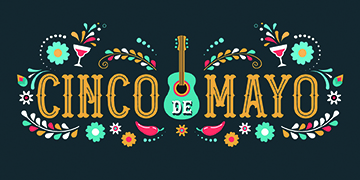
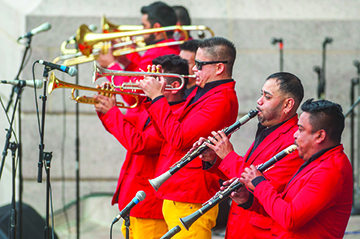
Cinco de Mayo: Cinco de Mayo is a beloved cultural tradition that will be celebrated regardless of an event being scheduled for downtown Denver.
This festival commemorating the victory of the outnumbered Mexican Army over French forces during the 1862 Franco-Mexican War takes place on or around the 5th of May. This year, that date falls on a Wednesday, so the tentative Civic Center Park celebration will take place on the weekend prior — depending on what event planners decide in what will most likely be an 11th-hour verdict. The two-day event attracts over 400,000 visitors and is particularly well known for offering an incredible array of Colorado Mexican cuisine and hosting events such as the Green Chili Bowl Cook-Off, a taco eating contest, a lowrider car show, and the infamous Chihuahua races.
The Colorado Dragon Boat Festival

Dragon Boat: The Colorado Dragon Boat Festival lights up Sloan’s Lake Park and has a definite date set for September 2021.
This unique gathering describes its mission as “the premier organization celebrating and promoting the culture, contributions and accomplishments of Colorado’s Asian-American and Pacific Islander (AAPI) communities.” Thankfully, this year’s event has a set date for September 25 and 26, in Denver’s Sloan’s Lake Park. Historically, the festival has taken place in July, but for 2021 event planners are no doubt hedging their bets on the theory that the pandemic curve will most likely flatten by fall rather than summer. Visitors can expect an otherworldly immersion in arts, entertainment, cuisine and of course — dragon boat races.
Large gatherings which are sanctioned and approved by the powers that be will return eventually, here’s to hoping it is sooner than later.

by Regan Bervar | Mar 19, 2021 | Main Articles
“Humans are startlingly bad at detecting fraud Even when we’re on the lookout for signs of deception, studies show, our accuracy is hardly better than chance.” – Maria Konnikova
 by Luke Schmaltz
by Luke Schmaltz
Over the last year, the pandemic has proven that there is no level of trickery that is too low for some people.
Humanity’s ever-industrious scammer contingent will seemingly stop at nothing to achieve its prime objective — to separate you from your money. The current populace of frightened, poorly informed, emotionally vulnerable people has created a lush marketplace for fraud. Folks who desperately want to stop isolating, masking and disinfecting their lives away and get back to living them instead are falling victim to COVID-19 vaccine scams.
These ploys are disguised as websites, emails, phone calls, text messages and — yes — personal visits to your home. The perpetrators make an offer, convince victims to provide personal information or money and then they disappear. Here are some of the scams currently underway and how to spot them.

Free Vaccines: The vaccines from Johnson & Johnson, Moderna and other companies should be free, no exceptions. Image: Johnson & JohnsonFree Vaccines: The vaccines from Johnson & Johnson, Moderna and other companies should be free, no exceptions. Image: Johnson & Johnson
All Vaccines Should Be Free
Moderna, Johnson & Johnson, Pfizer and their emerging vaccine-making counterparts are being compensated by the U.S. Government. There should be no cost to you other than a small administration fee, if any. If someone approaches you via phone call, text message, email, or in-person visit with an offer to “sell” you a dose or a vial of vaccine, report them to the Federal Trade Commission (FTC) at ReportFraud.ftc.gov. Sinovac is a China-based company which has tested a successful vaccine, yet this is not approved for distribution in the United States. Regardless, several social media campaigns were running ads claiming to be making this vaccine available for American consumers — for a price.
Scammers Have Bad Grammar
Anyone with a computer, an internet connection and a few basic skills can make websites and send emails. Since most of the vaccine scams are purported by criminals who are overseas, their lack of skill with the English language will be apparent in the text of the email or website landing page. In the case of an email, look for basic mistakes in punctuation, pluralization, spelling and euphemistic language. Also, no signature on an email is a red flag as is any email that appears to be from a government agency, pharmaceutical company, or a vaccine distributor. Websites offering vaccines will be using a specific set of keywords in their titles to attract traffic. Be on the lookout for terms such as “private vaccine, testing update, COVID validator, cure COVID, testing update, Corona vaccine and COVID -19.”
Phishy Phone Calls
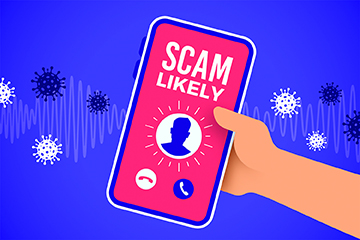
Phone Scams: Phone calls from scammers are the main way scammers separate people from their money.
Stateside scammers or those with a believable command over American English may call you out of the blue. They will claim to be working in some sort of an official capacity, either for a pharmaceutical company, a healthcare provider, the Centers for Disease Control (CDC) or some branch of the U.S. Government. The next giveaway is that they will ask you to “verify” your identity by providing them with some sort of personal information whether it is your Medicaid policy number, your birth date or your SSN. Some of them may go so far as to tell you they are going to show up and personally administer the vaccine for you. Remember this: whether on the phone or via email, verifiers are liars.
Bad Business

BBB: The Denver Better Business Bureau is keeping tabs on local and international scammers via their Scam Tracker Tool.
Meanwhile, the Denver chapter of the Better Business Bureau is keeping tabs on these scammers. Content and PR Specialist Keylen Villagrana offers insight into an array of both international and locally-run
scams. “Fake unemployment claims, stimulus check scams, puppy scams ([they] are rising as more people are working from home) and employment scams for work-from-home positions. [There is] even an elaborate romance scam operating overseas where victims are turned into ‘money mules’ in order for scammers to retrieve fake unemployment claim money. They use victims for their U.S. based bank account and ask them to wire money to a bank account [that is] very likely overseas. (Wire transfers can’t be traced),” she says. Of all the current ruses, one is unanimously more popular than the others. Villagrana explains, “Consumers are contacted after they have received the COVID-19 vaccine (although many are contacted that haven’t even received the vaccine), to take a survey and in exchange for a ‘gift.’ All they have to do is pay for shipping and handling ranging from $2.99-$19.99 depending on
the gift they choose. Most never receive anything and some have reported unauthorized charges.” Folks are in luck, however, as this agency keeps a running tally on all past and current scams via their “Scam Tracker” tool available here: www. bbb.org/scamtracker.
Trash Can Treasure
Ads such as the one mentioned above claiming to be selling vaccines should be disregarded. The messaging features such as Facebook Messenger are also avenues scammers will take to try and get your attention through personal messages containing “incredible” deals on Covid-19 vaccines. The main rule of thumb here: if it sounds too good to be true, it’s a scam.
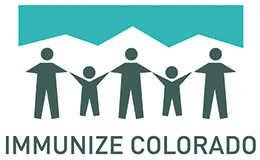
Legitimate Source: Immunize Colorado is one of the legitimate sources of “real” vaccinations.
Some Lines Can’t Be Skipped
Yet another scenario involves scammers who claim to be able to do the legwork for you and “track down” your vaccination. Others offer a similar service by promising that they can use their contacts in the medical industry to help you “skip the line” and get a vaccination sooner than the current tiered rollout system allows. These are scams that will require the service fee be paid in advance and once the money is sent, that’s all she wrote.
Thankfully, legitimate sources are standing by to provide citizens with answers about the specific tiers of the vaccine rollout and where the efforts are on the projected timeline. You can find out more by going to Colorado Vaccine Equity www.colorado vaccineequity.org, Immunize Colorado www. immunizecolorado.org and the Colorado Department of Health and Environment covid19.colorado.gov.
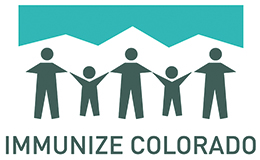
by Regan Bervar | Feb 19, 2021 | General Featured
“It’s not vaccines that save lives, it’s vaccinations.”
— Stephanie Wasserman, Executive Director, Immunize Colorado
 by Luke Schmaltz
by Luke Schmaltz
The strategy for combating the spread of Covid-19 and thus, reducing the subsequent fallout of loss and tragedy is fairly simple: inoculate the population. While this equation reads well on paper, implementing it across the Mile High region has a distinct set of challenges.
From a practical standpoint, it would seem that the biggest obstructions to vaccine distribution would be the tiered system of rollout phases (eligibility based on vulnerability) and the availability of enough doses for each demographic. While this is certainly the case, vaccine task force officials — including government appointed teams and private sector organizations — are facing formidable yet invisible hurdles anchored in misinformation and inter-generational mistrust of the medical system at large.
A Clearly Laid-Out Plan

The Colorado Department of Public Health and Environment has a systematic vaccination rollout plan.
The Office of Colorado Governor Jared Polis, in conjunction with the Colorado Department of Public Health and Environment (CDPHE), have established a series of phases to be implemented in a systematic, step-by-step fashion.
Phase One begins with high-risk individuals and healthcare workers (1A), people age 70+, moderate risk healthcare workers and first responders (1B.1), citizens aged 65-69, pre-K-12 educators, cold care workers and continuity of state government officials (1B.2), people aged 16-64 with two or more comorbidities and frontline workers (1B.3).
Phase Two includes Coloradans 60-64, people with high-risk conditions and continuity of operation workers in state and local government.
Phase Three, at last, includes anyone and everyone in the general population ages 16-59.
Governor Polis has gone so far as to speculate, as stated in a recent article by The Denver Post, that he expects folks to be returning to their beloved restaurants, nightclubs and bars by May, in a gradual transition of systematically loosening restrictions and returning everyday personal freedoms.
At the time of this writing, rollout of phase 1B.2 is underway and just about everyone involved in education including teachers, substitutes, bus drivers, cafeteria workers, janitors, and other support staff will be able to access the vaccine as will select members of the executive and judicial branches of government. These folks do not present an accessibility concern for vaccinators, but the other demographic this phase accommodates, folks age 65-69, is where things are set to get tricky.
The Front Lines Of Trying Times

Immunize Colorado is a nonprofit organization working in cooperation with CDPHE to get vaccines into arms across all Denver communities.
Stephanie Wasserman is the Executive Director of Immunize Colorado and has been out in the field and on the front lines since before the Covid-19 vaccine arrived. On a daily basis, she combats the social side effects of the pandemic. “My organization became gravely concerned because of the disproportionate impact Covid-19 has had on communities of color both in Colorado and nationally,” she begins. “We are not doing too bad in terms of getting shots into arms, but we are not meeting our equity goals. Also,” she continues, “there is significant hesitancy that exists in some communities due to the historic mistrust of the medical system.” Wasserman also cites “predatory behavior” as another driver of vaccine hesitancy, stating, “We have a very active anti-vaccine movement here in Colorado and they have recently targeted communities of color with disinformation.”
Clearly, this phenomenon reveals age-old fears that are easily agitated by misinformation. These negative (mostly online) messages tend to magnify the historical underservice of communities of color by the medical establishment and redirect that mistrust towards the vaccine rollout. Wasserman and her colleagues are undaunted and are fighting back via the recent launch of the Colorado Vaccine Equity Task Force (https://www.coloradovaccineequithe vaccines and y.org/). This site and its Spanish-translated partner site (https://www. equidadvacunacolorado.org/) are combatting the online misinformation with facts about the disproportionate impact COVID-19 has had while broadcasting endorsements from trusted, professional voices from communities of color as ambassadors for the vaccine. “The group comprises 35 members hailing from all walks of life,” Wasserman explains, “and all with one common trait — they identify as a person of color from an underserved community.” These include faith leaders, retirees, doctors, nurses, educators and one man who volunteered for one of the early Moderna clinical trials.
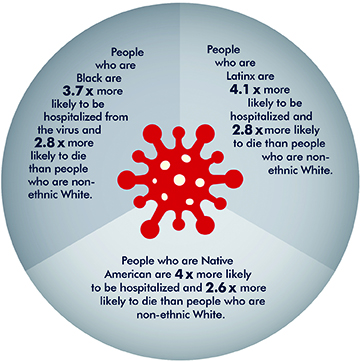
The Colorado Vaccine Equity Task Force is determined to vaccinate citizens in underserved communities.
In essence, the Task Force is mounting what is turning out to be a grassroots reeducation campaign to assuage fears, to combat misinformation and to ultimately get people from underserved communities vaccinated in order to stop the disease. “It has been super successful so far,” says Wasserman, “We’ve done policy and communication work, advocacy, outreach and engagement. It is really about getting into communities as much as possible, starting constructive conversations and allowing trusted community members to speak to their neighbors about the merits of the vaccine. “For example,” she begins, “We have two retired nurses on the Task Force who are very active and well known in their parish in the Montbello neighborhood. They held a pop-up clinic at their church and because it was hosted by them, hundreds of people signed up to be vaccinated and all supplies were gone in two hours.”
A Factually-Informed Outlook

Colorado State Representative Yadira Caraveo is also a Pediatrician with a medically-informed understanding of vaccines.
State Representative Yadira Caraveo, in addition to her role as an elected official, is also a pediatrician and a member of the aforementioned Colorado Vaccine Equity Task Force. Her primary roles are those of a coordinator and an administrator in the effort to achieve distribution equity of the vaccine. Regarding the timeline for getting the prescribed 70+% of the population vaccinated, Caraveo is hesitant to make an exact prediction. “I think the timeline has been changing as the realities on the federal level trickle down to the state level in addition to the lack of planning from the previous administration,” she explains. “Still, I think it is realistic and hopeful that we could get everyone who wants a vaccination taken care of by late summer, early fall.”
Optimism aside, Caraveo’s role in the Task Force has given her an informed perspective about vaccine hesitancy. “I think a lot of the uncertainty about this particular vaccine comes from the perceived speed with which it came out,” she begins. “People are out there saying ‘well, it can’t possibly be safe — it has only been 10 months since the pandemic started.’ But the important thing to remember is that science is ongoing and is built on decades of research and development. The research for these vaccines was built upon the research that was done for the MERS and SARS vaccines as well as mRNA that has been studied since the 1950s. It is a fact that scientists are continually working on things that they anticipate may be needed at some point — which is why this came out so quickly.”
Caraveo continues with a vaccine advocacy home-run hit, “As doctors, we’ve been talking for decades about how people don’t understand the need for vaccines because they haven’t seen a lot of the illnesses we vaccinate against now. Most people alive today have never seen someone with polio or tetanus because of the vaccines. This is the first instance in a century where we have developed a vaccine for something that people can see every single day — people who are getting sick and dying of COVID-19. The effects of the vaccine, or any vaccine for that matter are very minimal compared to what the illness does. The chances of anything happening [negatively] with the vaccine are one in a million as opposed to the chances of something bad happening should you get COVID-19.”
Caraveo ends with one last stark, unarguable, scientific gem of truth, “This is a perfect example of why vaccine hesitancy has grown over the last century and why it shouldn’t have grown. Now we can see, in real time, the effect of a vaccine versus the effect of an illness.”























